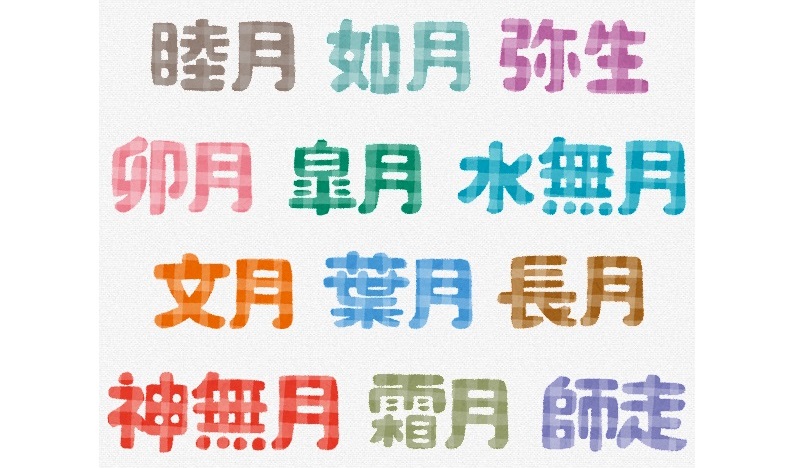The Japanese names of 12 months
 2022.01.12
2022.01.12If I ask you the other name of 2022 in Japan, you would probably answer Reiwa(令和)4 immediately. How about January? January is 一月(Ichigatsu), of course we know about it. But did you know January has a different Japanese name? In fact, each month has a traditional beautiful name in Japan, here are their names and the stories behind.
January is called 睦月(むつき) Kanji睦(むつみ) stands for getting together, getting along. In January, during the new year season, family members get together to celebrate, to feast and to rejoice the holiday.
February is called 如月(きさらぎ) The Kanji character of 如月is said to have originated from “Jyogetsu”, another name for February in ancient China, while the pronunciation of kisaragi means to wear more clothes—–since February is so cold!
March is called 弥生(やよい) 弥means increasing, more and more. When the spring comes, finally the trees, grasses, all plants start to grow under the longer daytime, warmer temperature.
April is called 卯月(うづき) 卯の花 is a wild flower (Deutzia crenata) that represents early summer. The name reminds me of the blooming pretty white flowers, swaying with the wind in a warm afternoon of April.
May is called 皐月(さつき) 皐月(Satsuki) is shortened from “Sanae Tsuki” which means the month of rice sowing. Although the old version of Kanji was佐月, the month of rice growing. Kanji 皐 is associated with azalea blooming which perfectly represent this time of the year as well.
June is called 水無月(みなづき) It literately means month of water. Since it’s the time to apply the water to the rice field. We can see how much the rice planting has integrated into Japanese culture.
July is called 文月(ふみつき) One of the sayings is that the name comes from the Tanabata festival, when people wrote songs and letters on tanzaku (paper strips) and prayed for the improvement of their calligraphy. —–Now it has become to make all sorts of wishes.
August is called 葉月(はづき) 葉means leaf in Japanese. At lunar year calendar of ancient times, August is the time of entering autumn and to see the falling leaves. That is probably why August is to be called the month of leaves.
September is called 長月(ながつぎ) 長 means long. When September comes, the night becomes longer than the day, and people can observe the moon over a longer period especially from the day of autumn equinox.
October is called 神無月(かんなづき) It’s intriguing that October’s name comes from Shintoism, the ancient Japanese way of believing that all things in the forest are divine. All the deities, the gods and the goddess (八百万の神/Yaoyorozunokami) get together at the Izumo Grand Shrine(出雲大社)in this month.
November is called 霜月(しもつき) 霜means frost. It is the time to see frost begins to form and the weather becomes colder and colder.
December is called 師走(しわす) 師走means running masters. It is said that in the last month of the year, all masters run around in a hurry to finish their business. I guess not just masters, common people like us are as busy as they are!





